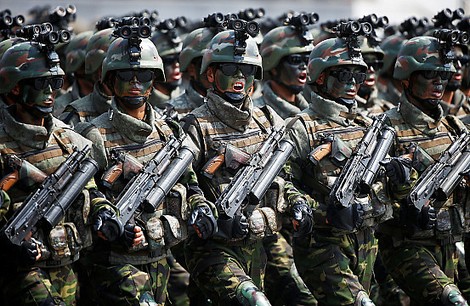Your podcast discovery platform
Curious minds select the most fascinating podcasts from around the world. Discover hand-piqd audio recommendations on your favorite topics.

piqer for: Globalization and politics Global finds
I am an Australian freelance journalist focussing on conflicts, politics, and warzones around the world. I have been working as a journalist for over 5 years, having reported from Australia, Germany, China, Egypt, Palestine, and Ukraine. I am especially interested in the way that new technologies are being used in conflict zones in unexpected and often disturbing ways. During my time working as a journalist, I also co-founded open-source war reporting site Conflict News.
What Would the Second Korean War Look Like?
The Korean Peninsula is once again back in the news, with tensions between North Korea (DPRK) and the US continuing to rise. While during the Obama administration the US followed the policy of 'strategic patience' where the US would wait for the North to come to the negotiating table regarding its nuclear program, the Trump administration is taking a wholly different tune.
It is now signaling that all options for dealing with the DPRK's nukes are on the table, including military action. Whether or not the US is serious about its threats, regional players like China are certainly taking notice — China's Foreign Minister even went so far as to say “one has the feeling that conflict could break out at any moment”.
But if North Korea, South Korea, and the US do go to war, what would that look like?
In his article for The Diplomat, Franz-Stefan Gady explores this theme. He shows that while the DPRK is unable to win such a war, they would still be able to inflict massive damage on their enemies. Even if only conventional and chemical weapons are used, the death toll would easily stretch into the hundreds of thousands. Large parts of Seoul would lie in ruins, and the area directly south of the DMZ would become a slaughterhouse as the militaries clashed.
While the scenario outlined in the article depicts a North Korean invasion of South Korea, it could just as easily depict an escalation from a US strike against the country's nuclear program.
Coming at a time of high tensions, this article is particularly poignant. It shows just how much the US is risking when they talk of striking North Korea and raises the implicit question: would such a strike be worth it, given the staggering human cost?
